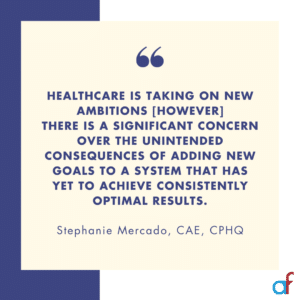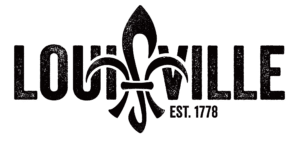Preparing Healthcare Professionals and Practitioners to Advance Quality and Safety Goals to the Next Level

Healthcare is inundated with ambitions and mandates for quality and safety.
However, the definitions of these terms are still unclear, either because the explanations have been too vague or because each profession within the healthcare workforce perceives quality differently. This is especially problematic when the stakes are as high as they are today for quality, safe and affordable healthcare.
Modern medical marvels indeed allow us to live better, longer lives. Still, it is also true that 25% of people who undergo treatment will face harm due to the healthcare they receive. It is also true that approximately 25% of all healthcare spending is considered wasteful.
In the meantime, healthcare is taking on new ambitions, working hard to advance equity and accelerate the understanding and adoption of AI, among many other goals.
There is a significant concern over the unintended consequences of adding new goals to a system that has yet to achieve consistently optimal results.
As we seek a progressive strategy in healthcare, we would be wise to consider how leveraging quality and safety as business strategies can accelerate our efforts. We must also consider how to incorporate these new goals into the existing quality and safety systems, processes, and structures, rather than isolating them in a separate silo disconnected from the rest of the work. Healthcare doesn’t need “one more thing” to do; it needs a plan to do its best work and systematically integrate ambitions into a broader model to drive excellence.
Nationally, quality of care is described as safe, timely, effective, efficient, equitable, and person-centered, each requiring attention. These factors can be applied to clinical services, operational roles, or administrative functions.
Given this broad scope of quality, how does a healthcare organization maintain focus, ensure it, and balance its quality functions as a routine part of delivering care? Is it enough to set these priorities of “what” needs to be achieved without more specific guidance on “how” to achieve them? More than two decades have passed since we embraced these mandates, yet we’re far from “mission accomplished.” What did we miss? What should we consider as we take on more ambitions and mandates for quality and safety?
A missing link in the plan for quality and safety activation has been the workforce. We set goals but missed a key implementation strategy element: readying the workforce, as individuals, teams, and a system, to effectively execute the work.

As a professional in association work, I have dedicated over 20 years to providing courses, webinars, pre-cons, and annual conferences aimed at educating and training the workforce, alongside clinical and non-clinical disciplines. I can tell you—it helps. However, we will never accomplish our goals if we are supporting one clinician or healthcare professional at a time who just so happens to opt into our events. We need to align the work and competencies of teams to achieve our collective goals, and healthcare systems need to embrace their role in optimizing their workforce—including funding competency development and team training.
Healthcare accounts for approximately 20% of GDP in the U.S., so the scope of our collective work is massive. As the industry expects our members to navigate this at the local level, associations play a critical role in helping them even more to address these priorities. We need to question if they have the requisite skills and competencies to achieve these goals, and whether their support staff and leadership do too.
The strategic pursuit of quality in any healthcare organization must also address today’s challenges of a dramatically changing industry, with post-pandemic issues like significant and growing workforce shortages, changing technologies, and rising costs. These growing challenges require organizations to find new ways to align expectations across disciplines, assure team collaboration, and accomplish more with less. The question remains: how do you get everyone on the same page, pulling in the same direction, and becoming excited about the possibilities in new ways?
NAHQ—the National Association for Healthcare Quality—is a national leader and enthusiastic partner in assuring that healthcare quality and safety are effectively understood by healthcare professionals, clinicians, and healthcare executives. At a time when our constituents are looking to their professional associations for guidance and leadership, NAHQ is stepping up to create and share universal competency standards for quality and safety. We are continually developing and integrating cutting-edge content, like today’s emerging focus on population health.
As we strive to address the unfunded mandates and priorities for healthcare, and a workforce that is disjointed, NAHQ’s state-of-the-science unified standard, vocabulary, skills, and competencies for quality and safety are increasingly used to prepare and align the workforce, helping them navigate the changes they face.
Consider the following two questions as you prepare your constituents for the road ahead:
- Do your constituents have the requisite knowledge and skills in quality and safety? If they are unclear on how to leverage data to drive decisions-making, improve processes and outcomes, or address population health, they need to start there. A solid foundation in these areas is critical. Placing more expectations on shaky ground is never a good idea.
- Taking on issues like equity or AI (different but similarly complex) can be a distraction if not integrated into the broader quality and safety agenda. Ensure your constituents understand this. Ask them to consider how to systematically incorporate new priorities into existing work so that it can be sustained and relieve workforce burden.
Quality and safety in today’s healthcare environment have never been more important! Unleashing the vision and the work of improving quality must be done, and it can be achieved with renewed passion and focus. While priorities and scope may change, the tools that we may already have can guide us to greater impact. Quality strategy, competencies, and skills will be the secret to our success.
For more information contact www.nahq.org.
This article is part of Association Forum’s Healthcare Collaborative initiative. Healthcare Collaborative is made possible by the following supporters:
Tags
Related Articles
Discover Phoenix’s Growing Reach in Healthcare
Learn more about how Greater Phoenix is one of the fastest-growing markets for life sciences...
The Power of Young Medical Professionals
How to embrace young medical professionals and the changing membership landscape.
Addressing the AANHPI Leadership Gap in Healthcare
Using our voice is more important than ever before.





